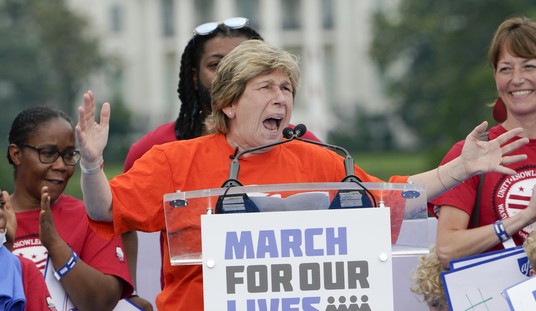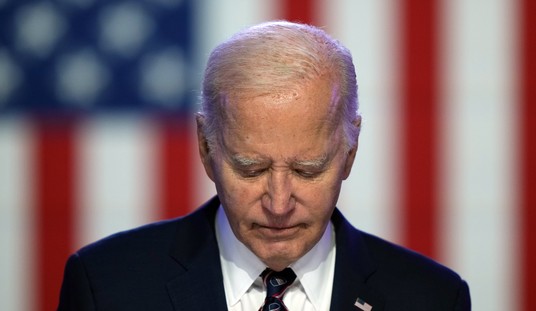The U.S. Green Building Council has begun floating a series of progressive amendments to its building certification program, stirring controversy within the construction, forestry and chemical industries that warn the proposal is radical environmentalism masquerading as reasonable regulation.
The proposed changes to the Leadership in Energy and Environmental Design (LEED) program, administered by the private USGBC group but since adopted by the federal government, disallows the use of over 75 percent of America’s certified forests and the third most commonly produced plastic worldwide.
A building must cross varying green thresholds — accruing credits through an exhaustive review of sustainability, water efficiency, energy and materials — to earn one of the program’s four accreditation levels. As written, the four new accreditation levels will bar the usage of products containing Polyvinyl chloride, better known as PVC, or lumber sourced from over three-fourths of American certified forests.
In a preferential nod to one forestry certification group, LEED stipulates that credits will be awarded for the “responsible extraction of raw materials” that qualify as “[Forest Stewardship Council] or better.”
Unlike other green building rating tools like Green Globes and the National Green Building standard that recognize all forest certification standards, LEED’s critics say the insistence on FSC-certified forests or the undefined “better” baseline has erected an artificial and ambiguous barrier to American timber.
“‘FSC or better’ is neither logical nor scientific,” Michael Goergen Jr., executive vice president and CEO of the Society of American Foresters, said of the decision. “Especially when it continues to reinforce misconceptions about third-party forest certification and responsible forest practices.”
But whereas industry forces acquiesced to the technical provisions in earlier models, the proposal to ban products containing PVC has put on edge the construction and chemical industries.
The effective banning of the third most widely-produced and consumed plastic worldwide means a tremendous, new burden on the industrial and construction sectors, as the pair will be forced to use other, more expensive alternatives whose own environmental merits are ambiguous by the government’s own account.
While the outright banning of PVC has been a goal of the environmental lobby for some time — GreenPeace has a campaign to “phase out this poison plastic” — USGBC’s assent, some say, runs counter to the group’s long-held posture towards the chemical.
A 2007 study by the USGBC revealed PVC outperformed a number of still-approved alternative materials in ecotoxicity, eco depletion and contribution to climate change. Specifically, the report found:
“PVC performs better than some alternatives studied for window frames, siding, and drain-waste-vent pipe;”
“Relative to the environmental impact categories (acidification, eutrophication, ecotoxicity, smog, ozone depletion and global climate change), PVC performs better than several material alternatives studied;”
“If buyers switched from PVC to aluminum window frames, to aluminum siding, or to cast iron pipe, it could be worse than using PVC;”
“The evidence indicates that a credit that rewards avoidance of PVC could steer decision makers toward using materials that are worse on most environment impacts.”
The USGBC must “develop guidelines for approval of innovation credits that move the industry forward,” the report advised. “Recognizing that there are many possible ways to address this challenge, the capabilities and motivation of the marketplace should be engaged as a resource.”
So much for that.
Yet some say the radical bent is not particularly surprising, considering the environment-as-religion disposition of LEED’s founder, Robert Watson.
Once the chair of the United Nations Intergovernmental Panel on Climate Change until it was reported he began “advocating more openly for global climate change policy, rather than just assessing the science,” Watson famously said that “buildings are literally the worst thing that humans do to the planet.”
Others point to what they call an unseemly kinship with the federal government, which they say has largely preserved the certification program’s revered status globally.
Government officials in the U.S. General Services Administration, which manages the functioning of other federal agencies and bureaus, have mandated all federally-owned facilities be built to LEED’s Gold specifications, the second highest certification the USGBC offers. GSA officials announced earlier this year it had enrolled 50 additional existing properties in the program. (Nearly 19 million square feet is LEED-certified in the District of Columbia.)
Sometime later this year, the agency will begin considering adopting LEED 2012.
That the GSA, whose own judgment has been impeached in the wake of its lavish government-sponsored conference in Las Vegas, was tasked by the White House to consider implementing these new regulations is enough to give pause to sensible government-watchers.
If these high-roller bureaucrats apply the same poor judgement here, their decision will effectively ban American timber and PVC for the federal government. Private industry, of course, will take cold comfort in the knowledge that government bureaucrats will likewise be handicapped by terrible regulations.
John Ruberry edits the Illinois political blog Marathon Pundit.








Join the conversation as a VIP Member